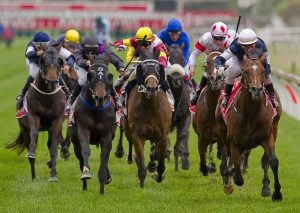For most of racing history such an occurrence would have been unthinkable, but it is a sign of the times that the aggregate height of the current champion jockeys of Britain and Ireland is just about 12 feet. By traditional reckoning, it should be nearer to 10!
It is a fact of modern life that we are all getting taller, jockeys included, but that fact does not tell the full story: the achievements of Richard Hughes in Britain and Joseph O’Brien in Ireland are not merely an indication of a growing population. More particularly, they are a tale of two citizens about whom no praise would be too high.
One of racing’s clichés is that good horses make good jockeys. However, bearing in mind that another truism is that if your horse is good enough, he’ll win despite you, it’s probably fairer to say that good horses make jockeys successful, but don’t necessarily make them good. In Joseph O’Brien’s case, being his father’s son has obviously helped his career massively.
However, riding the likes of Camelot and St Nicholas Abbey has not merely made him a successful jockey: he has, in stunningly double-quick time, turned himself into a top-class rider, despite having a body whose size has surely made things hard for him. A telling sign of his ability is that his championship depended on his ability to attract outside rides as well as mounts from his own stable, and the breadth of support which he enjoyed from across the country’s training ranks tells its own tale: despite his tender years, he is a thoroughly deserving champion.
Whatever praise we might direct towards Joseph O’Brien, we should hail Richard Hughes even more fervently. Unlike O’Brien, Hughes started out as a light-weight – but his race-riding career was still in its very early days when it became apparent that he was going to continue to grow and grow.
For a while he looked likely to follow in the footsteps of his Cheltenham Gold Cup- and Champion Hurdle-winning father as a National Hunt jockey (and he did win several races over jumps, including the 1997 Irish Champion Hurdle on the Noel Meade-trained Cockney Lad) but, by a super-human effort of willpower, he has managed to stablise his weight so that now, aged 39, he is still able to ride regularly at 8st 8lb.
Hughes, though, has not only developed the astounding self-discipline required to enable him to pursue a long-term career as a Flat jockey. And he is not only a very successful jockey, he is also a very, very good one. Throw in the fact that he is a man of absolute integrity and consideration for his fellows, and one can only conclude that few champions have ever deserved their laurels more richly.
The champion apprentices of Britain and Ireland also deserve particular commendation. Amy Ryan, like Joseph O’Brien, has found herself blessed with the advantage of riding for a father who is an extremely successful Flat trainer.
However, as with O’Brien, she has earned the mounts on the stable’s horses rather than been gifted them. She is a very talented race-rider whose professionalism and dedication is on a par with her ability. Furthermore, in a profession in which females still battle against age-old prejudices, her achievement in being Britain’s first outright female champion apprentice should not be underestimated.
In Ireland, champion apprentice Ronan Whelan has become the latest top young horseman to emerge from the stable of Jim Bolger, whose previous graduates include both Aidan O’Brien and AP McCoy.
British racegoers had a sight of Whelan’s ability when he rode the stable’s second string Leitir Mor into second place in the Dewhurst, judging the pace perfectly on the front-runner and, for much of the race, looking likely to upstage Bolger’s principal hope Dawn Approach. It is fair to assume that he can expect to look forward to good rides in many more big races on both sides of the Irish Sea in years to come.



